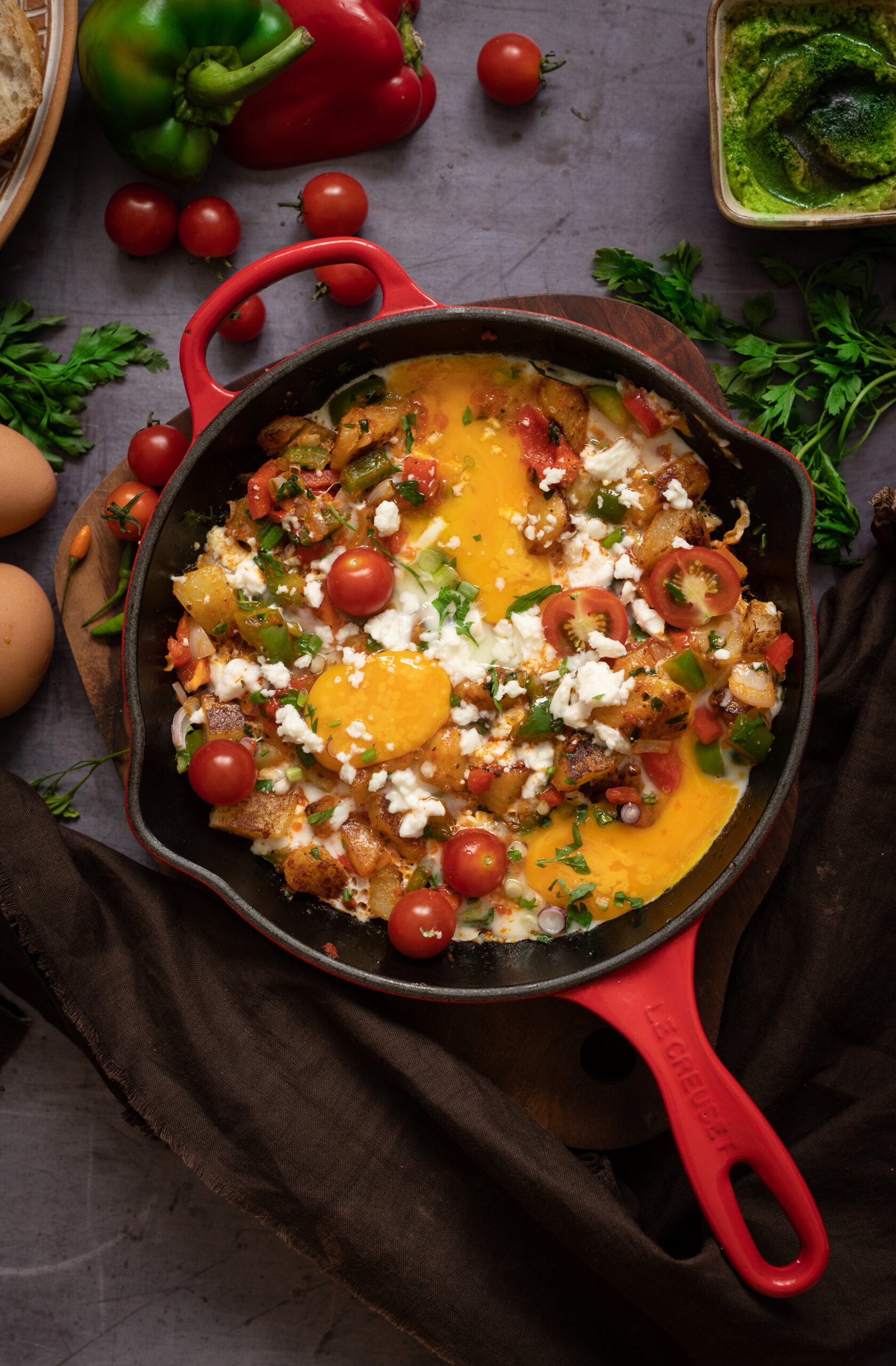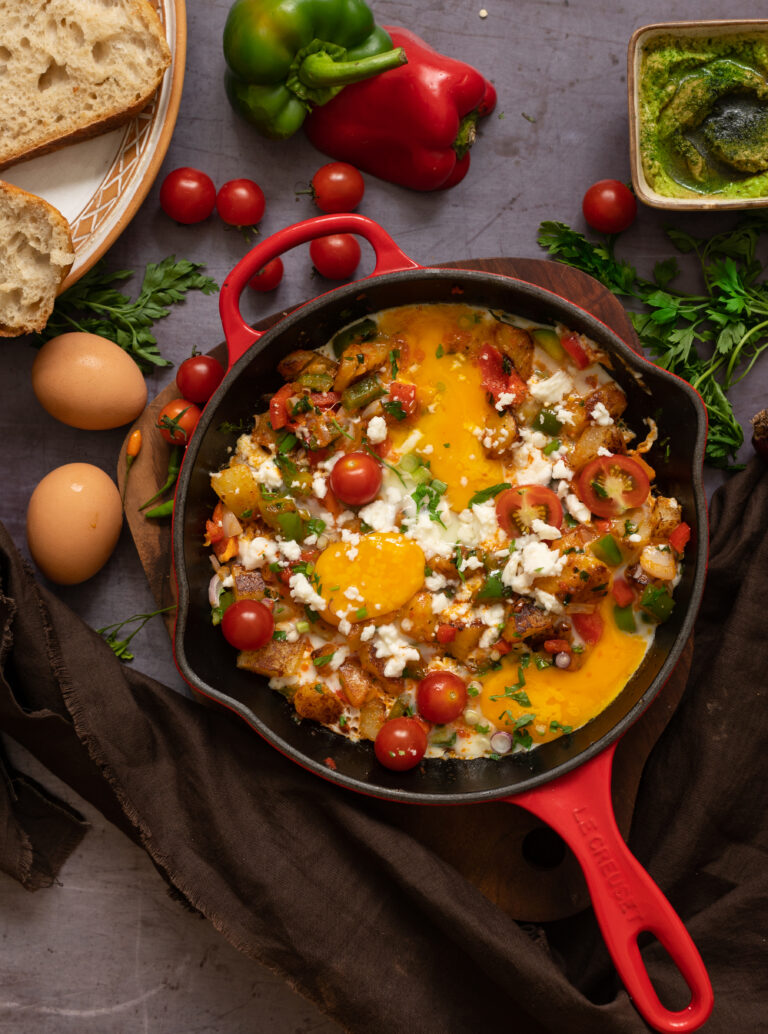Ever since the lockdown began several months ago, I have been coming up with different ways to keep our meals at home interesting, since we cannot dine out. This has meant celebrations in our own garden, as well as creating new trends to look forward to. This Sunday breakfast bowl is one of them.
Our Sunday brunches contain lots of variety to suit everyone’s tastes – my son always wants waffles or pancakes, others have a craving for avocado toast, and so on. I found that the best way to get everyone to try out different components of the spread I wind up serving is to make a brunch bowl, with a little of everything. I strike a deal with my kids: not only do they eat the sweet waffles, but they also get some protein from eggs, plus a boost of avocado.
The star of our meal is the shakshouka, an egg-based dish from the Middle East and North Africa, which I personally encountered in Turkey first. Continuing the Buddha bowl series (previous instalments here and here, and more to come), it’s one of the items from our Sunday spread that everyone in the family agrees on, and wants second helpings of. It’s so popular at home that we call it the “Shah-shouka”.
As I always say with fusion food, we can only make interpretations. My “Shah-shouka” is truly my own, rich with the flavours and style that are unique to my kitchen, just as yours will be your own too. The best part of this for me is that it’s one of the many dishes that gets a dollop of my homemade all-purpose tomato puree, which I also use in my Mexican-influenced Buddha bowl. It’s amazing how versatile it is and how it goes into everything. My version of this dish is Indianised, of course, along with certain ingredients like olive oil that I just have a preference for. You could use rosemary or thyme instead of cumin, if that’s your taste, and make your own interpretation.
If you don’t eat eggs, you can turn this dish into one that is not just vegetarian but vegan, simply by substituting them for tofu slices. They will give you the same protein quotient that eggs do. There’s always a simple solution to everything when it comes to improvising in the kitchen.
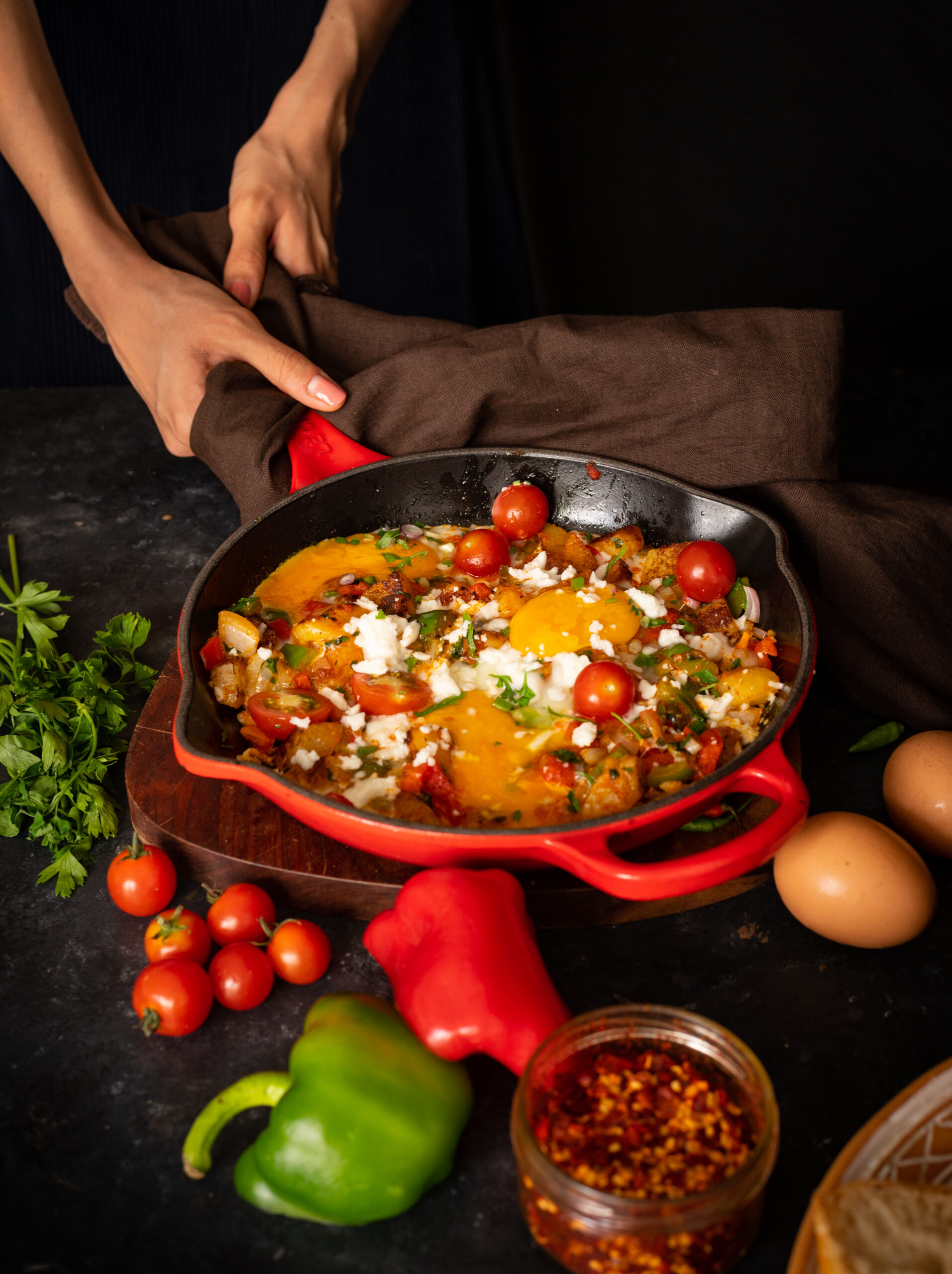
“Shah”-shouka
(Serves 2)
2 tablespoons olive oil
2 cups seeded and diced colourful bell peppers
2-3 spring onions
3-4 cloves garlic
2 tablespoons cilantro
2 tablespoons parsley
1 cup boiled potatoes
½ teaspoon roasted cumin powder
½ teaspoon paprika (adjust to your taste)
2 tablespoons re:store tomato purée
4 eggs
1 tablespoon feta cheese
Salt to taste
Slices of sourdough and avocados while serving
Heat the oil over a cast iron skillet. Add the onions, garlic, bell peppers and potatoes. Stir on a high flame until they are brown. This will take about 5 minutes.
Reduce the heat and add the spices. Once they have come together, add the tomato purée.
Make sure that all the vegetables are well-coated with the purée and the spices.
Once the mixture is hot, make 4 indentations and pour the eggs into each of them. Allow the eggs to cook to your liking, and season them with salt and pepper. Sprinkle the cilantro and crumble the feta cheese over everything. You may add some cherry tomatoes if you’d like the dish to look dramatic.
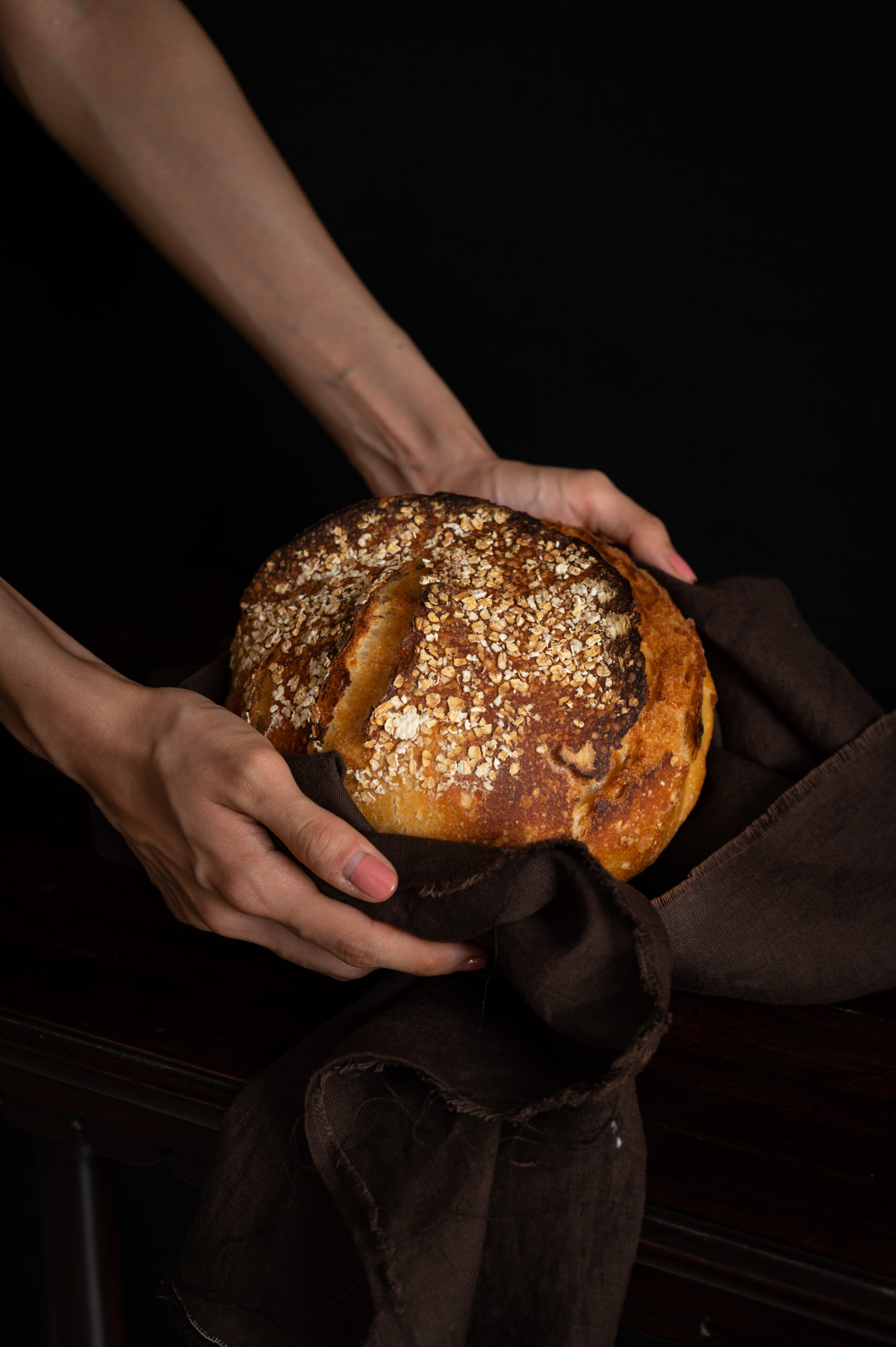
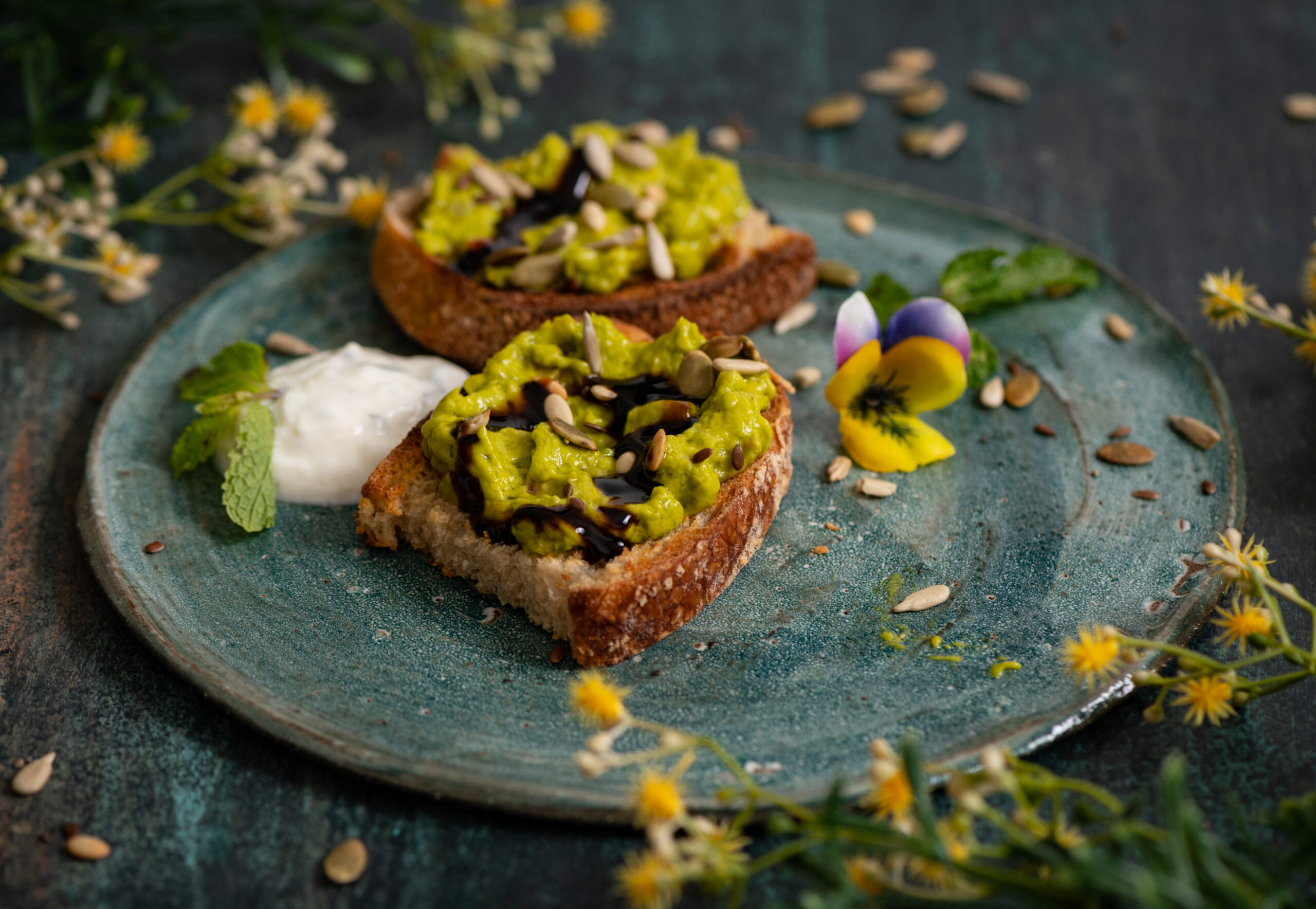
Here at home, we serve our “Shah-shouka” with the works: sourdough slices, waffles and lots of fresh avocados. Adding these sides to our individual servings indeed turns this egg dish into a Buddha bowl. This hearty and filling dish is a great way to relax over a meal as a family. I hope you’ll make this a part of your brunch this weekend, too. The portions above serve two, but a larger pan and doubled ingredients will let you serve four. However you choose to have it, tell me how you like your shakshouka. Do stay tuned for another meal-in-a-bowl soon, from yet another part of the world.
